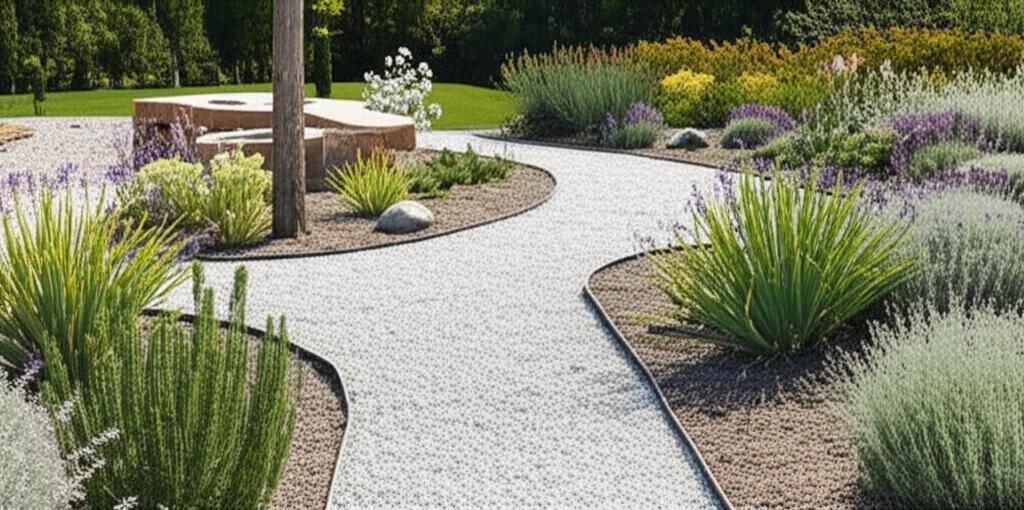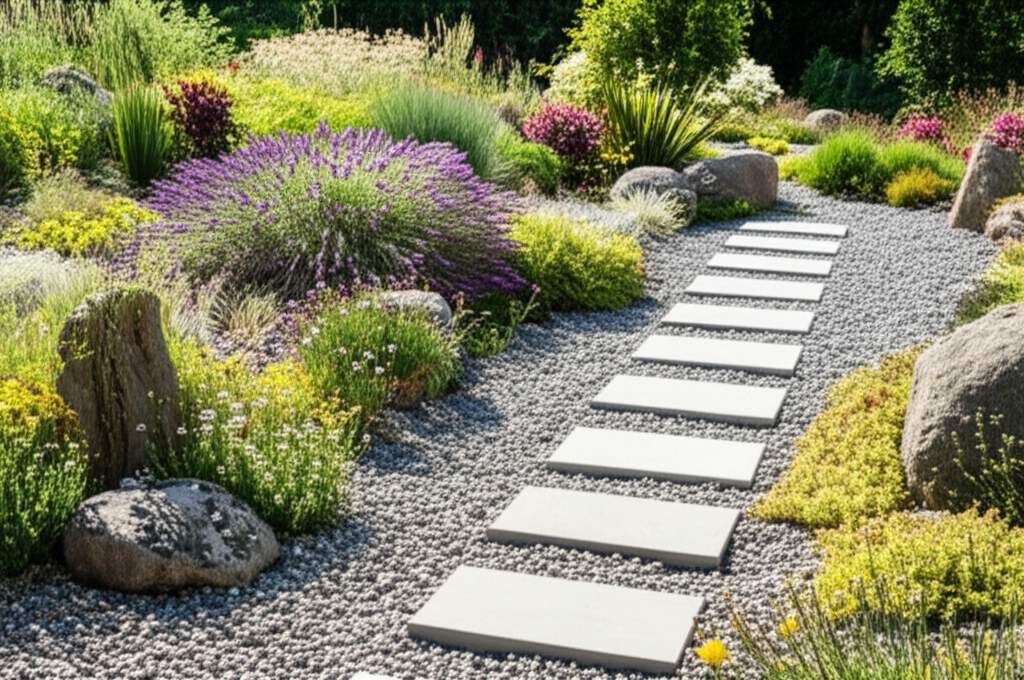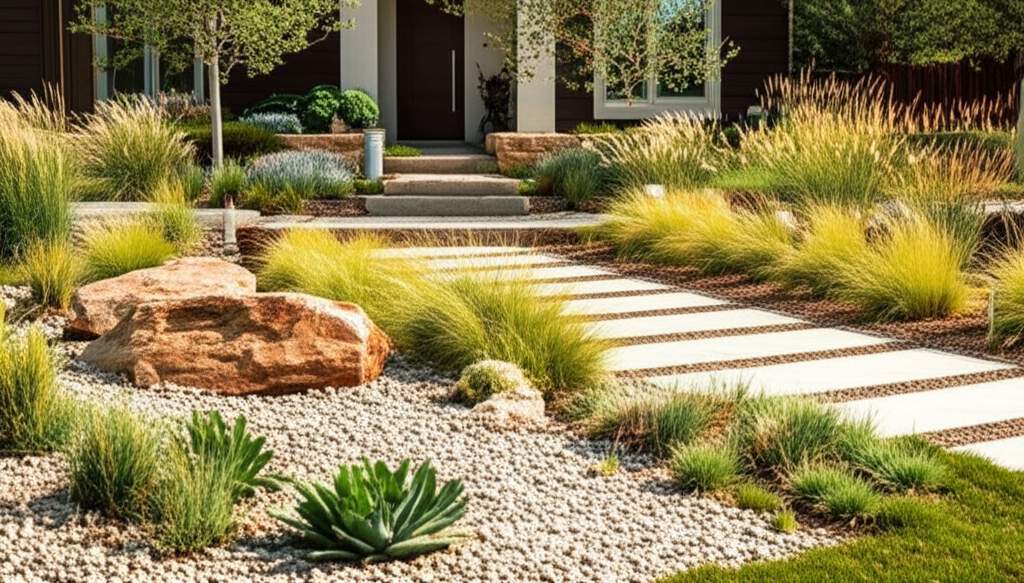Gravel Gardens: Effortless Elegance for Water-Wise Yards
Are you tired of a yard that demands endless hours of watering, mowing, and maintenance? Many homeowners share this frustration, yearning for a space that looks inviting and vibrant without draining their time or resources. A gravel garden could be the perfect solution, blending modern aesthetics with practicality. This design approach not only conserves water but also creates a serene, textured landscape that thrives with minimal effort.
Gravel gardens are far more than just rocks strewn across dirt. They are intentional designs where gravel serves as both a functional element and a striking visual feature. By reducing weed growth, improving drainage, and highlighting drought-tolerant plants, these gardens offer a sustainable way to transform your outdoor space into a haven of calm and beauty.
Start with a Clear Vision for Your Space
Before diving into the physical work, take a moment to evaluate your yard with fresh eyes. Walk through the area, noting which spots feel neglected or overly demanding. Gravel gardens can adapt to various scales, whether you envision a small accent area near a patio or a full front yard overhaul.
Consider these key points during your assessment:
- Which areas receive the most sunlight? Gravel gardens flourish in sunny or partially shaded spots.
- Are there places where water collects after rain? While gravel aids drainage, persistent pooling may require extra attention.
- What views do you want to enhance or hide? Use gravel and plants to frame desirable sightlines or screen unwanted ones.
- How much space can you realistically manage? If you are unsure, begin with a modest section and expand later.
This thoughtful observation ensures your gravel garden aligns with your lifestyle and the unique characteristics of your property.
Lay the Groundwork for Lasting Results
Preparation is the cornerstone of a successful gravel garden. Investing time in this stage prevents future headaches and sets the stage for a low-maintenance landscape.
- Clear the chosen area completely. Remove grass, weeds, and debris to create a blank canvas for your design.
- Smooth and grade the soil. Ensure a slight slope for proper drainage, avoiding flat areas where water might stagnate.
- Install a permeable weed barrier. This fabric layer suppresses unwanted growth while allowing water to pass through.
- Spread the gravel evenly. Aim for a depth of two to three inches to cover the soil adequately without feeling unstable underfoot.
A well-prepared base supports plant health and keeps your garden looking tidy with minimal ongoing work.
Choose Plants That Thrive in Gravel
Selecting the right plants is crucial for a gravel garden that looks lush yet requires little care. Focus on drought-tolerant species that adapt well to well-drained conditions. Ornamental grasses, succulents, lavender, and native perennials often excel in these settings, offering texture and color throughout the year.
Group plants with similar water and light needs together, spacing them to allow for mature growth. Consider adding a mix of heights and forms, such as low-growing ground covers alongside taller grasses, to create visual depth. This strategic planting not only enhances the garden's appeal but also minimizes maintenance demands.
Elevate the Design with Thoughtful Details
Finishing touches transform a basic gravel garden into a polished, inviting space. These elements add structure and personality, making the area feel like an extension of your home.
- Define borders with edging. Materials like metal, stone, or brick keep gravel contained and maintain a crisp look.
- Introduce focal points with larger rocks. Boulders or unique stones serve as natural sculptures, anchoring the design.
- Invite relaxation with seating. A bench or a pair of chairs encourages you to pause and enjoy the surroundings.
- Accent with containers. Place pots on the gravel for pops of seasonal color that can be easily updated.
- Enhance ambiance with lighting. Solar-powered path lights or subtle uplights showcase plants and textures after sunset.
These details ensure your gravel garden feels deliberate and welcoming, elevating it beyond a simple utilitarian space.
Nurture Through the Seasons
Gravel gardens evolve with the seasons, each bringing subtle shifts in care needs. In spring, clear away winter debris and add a light layer of compost around plant bases to support new growth. During summer, water deeply but sparingly to encourage deep root systems, especially for newly established plants. Autumn offers a chance to trim back faded blooms and grasses, though leaving some seed heads adds winter interest. In colder months, the gravel itself becomes a striking feature, contrasting with bare branches or evergreen foliage.
By aligning care with these natural cycles, you maintain the garden's beauty without burdensome tasks.
Savor the Simplicity of Your Gravel Garden
With your gravel garden in place, take time to appreciate the transformation. Sit outside with a warm drink, observing how sunlight plays across the stones and plants at different hours. Notice the quiet rustle of grasses or the buzz of pollinators drawn to hardy blooms. These moments highlight the value of a landscape that offers peace without constant demands.
Gravel gardens encourage a slower pace, replacing the grind of traditional yard work with a sustainable, enduring design. As plants mature and the space evolves, you will find it becomes a cherished part of your home, rewarding you with beauty and tranquility year after year.


